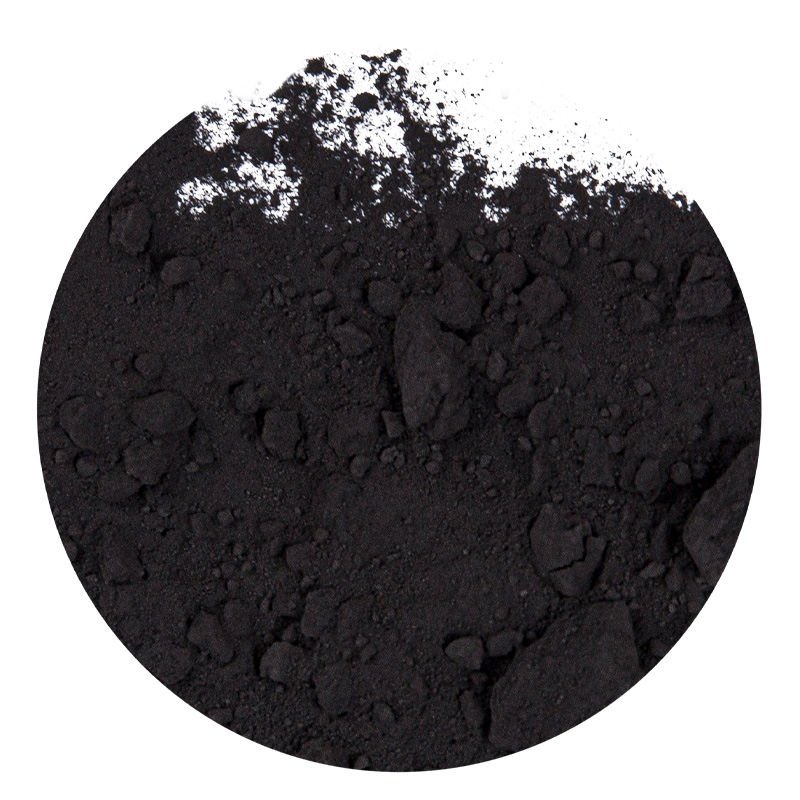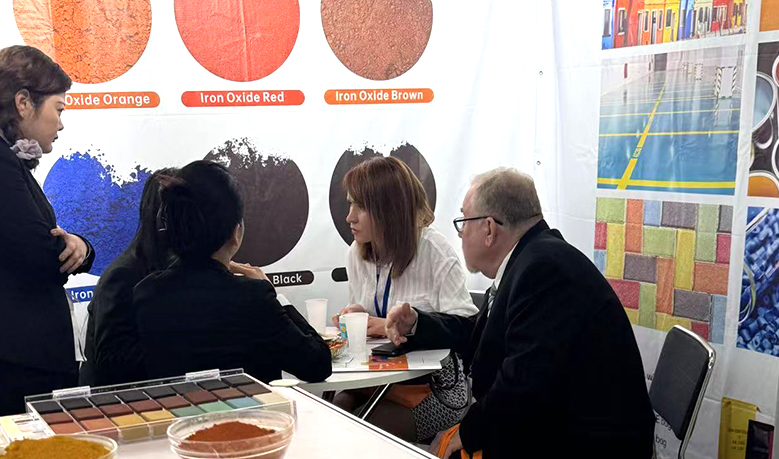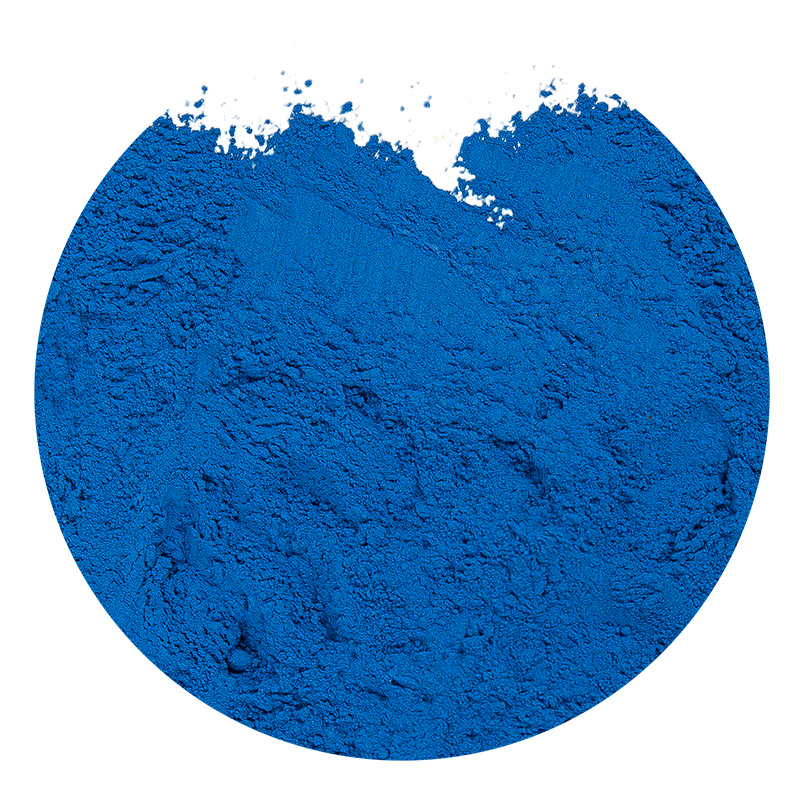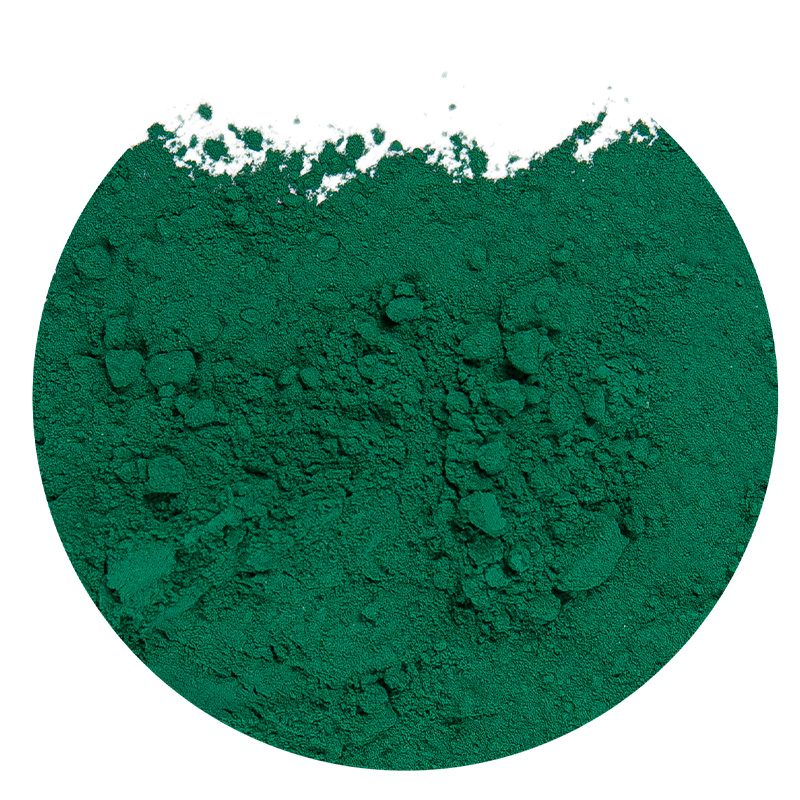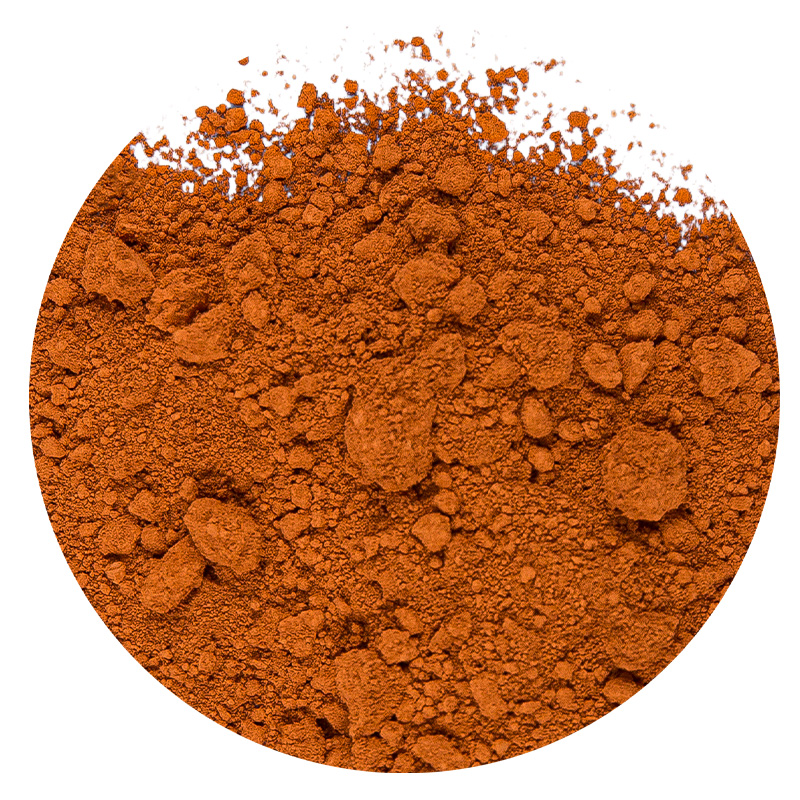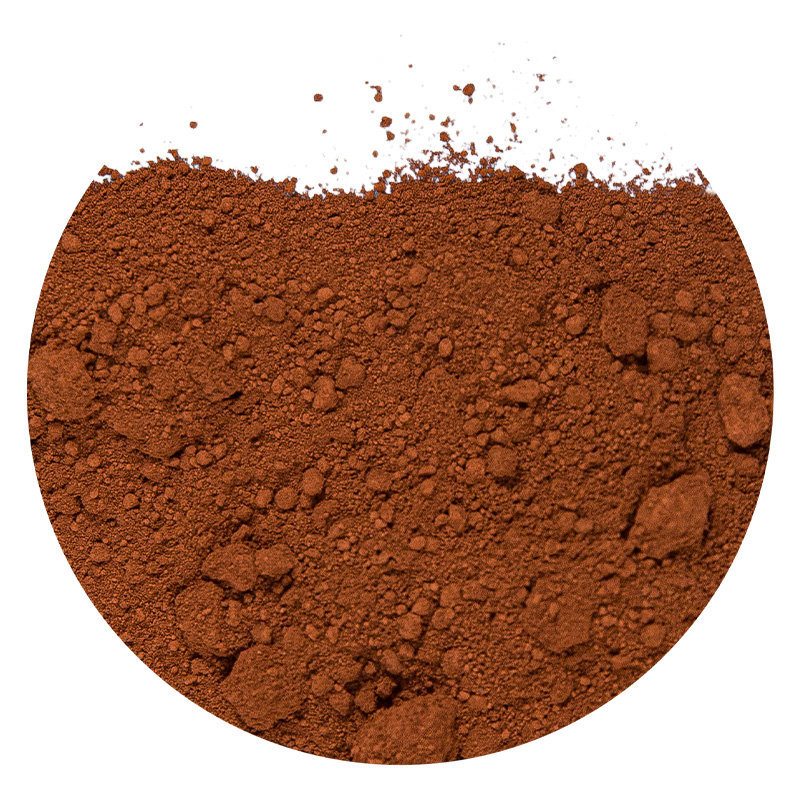A Comprehensive Guide to Black Iron Oxide
- 1 Introduction: Unveiling the Mystery of Black Iron Oxide
- 2 Widespread Applications of Black Iron Oxide
- 3 Safety and Health Considerations
- 4 The Fusion of Art and Industry: Pigment Formulations
- 5 Market Trends and Economic Value
- 6
- 7 Iron(II,III) Oxide vs. Black Iron Oxide: Clarification and Differentiation
- 8 Future Outlook for Black Iron Oxide
Introduction: Unveiling the Mystery of Black Iron Oxide
From ancient cave paintings to modern smartphone screens, black iron oxide is everywhere. This seemingly simple black powder is, in fact, an indispensable key material in modern industry and art. Its chemical name is iron(II,III) oxide ($Fe_3O_4$), a stable, non-toxic, and highly opaque inorganic compound.
Although it is not a household name, its presence can be felt in a wide range of products. For instance, many black paints for buildings, anti-corrosion primers for cars, and concrete pigments rely on it. In cosmetics, black iron oxide is a widely used and safe colorant for eyeliners, mascaras, and foundations, providing a long-lasting and deep black hue.
The widespread use of black iron oxide is primarily due to its unique physical and chemical properties. It not only provides a pure, stable black color but also boasts excellent weather resistance and lightfastness. This means that materials colored with it can maintain their color for a long time, even when exposed to sunlight and harsh weather.
Parameter Comparison of Black Iron Oxide with Other Common Black Pigments
To better understand the superiority of black iron oxide, here is a comparison with several common black pigments:
| Property | Black Iron Oxide | Carbon Black | Manganese Black |
| Chemical Formula | $Fe_3O_4$ | C | $MnO_2$ |
| Color Saturation | Slightly lower, brownish-black | High, bluish-black | Higher, grayish-black |
| Tinting Strength | Strong | Extremely strong | Weak |
| Lightfastness | Excellent | Excellent | Fair |
| Chemical Resistance | Excellent | Excellent | Poor |
| Safety | Non-toxic, widely used in cosmetics | Purity dependent, some types have health concerns | Toxic, not suitable for skin contact |
| Magnetism | Strongly magnetic | Non-magnetic | Non-magnetic |
As shown in the table above, black iron oxide performs exceptionally well in terms of safety, weather resistance, and chemical resistance, making it an ideal choice for applications with demanding performance requirements. Although its tinting strength may be lower than carbon black, its unique magnetism also opens up possibilities for specific applications, such as in magnetic inks and electronic materials.
By gaining a deeper understanding of black iron oxide, we can not only better appreciate its crucial role in various industries but also gain a new perspective on the seemingly ordinary black objects around us.
Widespread Applications of Black Iron Oxide
The reason why black iron oxide holds such an important position in modern industry is its unparalleled versatility. This multi-talented compound plays a key role in numerous fields, from adding color to buildings and ensuring the durability of cars to providing a deep black in our daily cosmetics.
As a Pigment in Coatings and Construction Materials
One of the most well-known applications of black iron oxide is its use as a high-performance pigment. Its high tinting strength, excellent weather resistance, and UV resistance make it an ideal choice for outdoor coatings and construction materials. Whether in concrete, mortar, or asphalt, it can provide a long-lasting and stable black color that resists fading from sun and rain. For example, black paving stones, cement tiles, and artistic floors often use black iron oxide to achieve the desired color effect.
| Property | Black Iron Oxide | Traditional Organic Black Pigments |
| Lightfastness | Excellent, almost no fading | Poor, susceptible to UV rays |
| Weather Resistance | Excellent, resistant to acids, alkalis, and weathering | Poor, prone to degradation |
| Cost | Lower | Higher |
| Environmental Friendliness | Non-toxic, free of heavy metals | Some may contain harmful substances |
Applications in Plastics and Rubber
Beyond the construction industry, black iron oxide is also vital in plastic and rubber products. It is widely used for coloring and enhancing the durability of products. From black plastic pipes and automotive interior parts to cable sheaths and tires, it not only provides a stable black color but also enhances the material's mechanical properties, making it more robust and durable.
Applications in Cosmetics
You may not know that many of the cosmetics you use daily also contain black iron oxide. Due to its non-toxicity and good compatibility with the skin, it is approved by regulatory bodies like the FDA as a safe colorant. In eyeliners, mascaras, eyeshadows, and foundations, black iron oxide provides a pure, rich, and long-lasting black color without causing allergies or irritation.
Other Special Applications
The unique magnetism of black iron oxide has also opened up special application fields for it. In the production of magnetic materials, it is an important raw material for manufacturing magnetic recording media, magnetic inks, and electronic components. Furthermore, it has wide-ranging uses in catalysts, pigment dispersants, and water treatment.
In summary, with its superior performance and low cost, black iron oxide has become an indispensable and versatile material in modern industry, and its application areas continue to expand.
Safety and Health Considerations
For any industrial raw material, its safety is one of the most significant concerns for both users and consumers. The safety of black iron oxide, a widely used compound, has been rigorously scientifically evaluated. Overall, under normal use conditions, black iron oxide is considered non-toxic and safe.
Low Toxicity and Biological Inertness
Black iron oxide, or iron(II,III) oxide ($Fe_3O_4$), is a very stable compound. It is insoluble in water, which means it is difficult for the human body to absorb and metabolize. This biological inertness prevents it from causing toxicity when ingested or in skin contact. For this reason, black iron oxide is approved by various food and drug regulatory bodies, such as the U.S. Food and Drug Administration (FDA), as a safe colorant for food and cosmetics.
| Property | Black Iron Oxide (as a pigment) | Some Organic Black Pigments |
| Heavy Metal Content | None | Some may contain them |
| Allergenicity | Extremely low | Higher |
| Biodegradability | Non-biodegradable | Some are biodegradable, but may produce harmful intermediates |
| Toxicity | Non-toxic | Some have toxic or carcinogenic risks |
Potential Risks and Safety Precautions
Although black iron oxide itself is non-toxic, necessary safety measures should still be taken in certain situations. The main potential risk is the inhalation of its fine powder. Long-term inhalation of any form of fine dust can cause mechanical irritation to the lungs, leading to respiratory issues.
Therefore, when producing, processing, or packaging black iron oxide powder, the following protective measures should be taken:
- Wear respiratory protective equipment: Use N95 or higher-standard dust masks to prevent dust inhalation.
- Ensure good ventilation: Make sure the work area is well-ventilated to reduce airborne dust concentration.
- Follow safety operating procedures: Strictly follow the requirements of the Material Safety Data Sheet (MSDS) for handling and storage.
Additionally, since black iron oxide is magnetic, care should be taken to prevent its dust from affecting precision electronic devices or magnetic storage media.
In conclusion, black iron oxide is a safe and reliable material. As long as basic industrial hygiene and safety protocols are followed during handling, the risks associated with its use are fully manageable.
The Fusion of Art and Industry: Pigment Formulations
As a fundamental and important pigment, black iron oxide's applications span across artistic creation and industrial production. Whether a painter is formulating deep black oil paints or an engineer is creating highly durable industrial coatings, the core is the precise control of the pigment formulation.
Basic Pigment Formulation
To create a basic black iron oxide pigment, the powder is typically mixed with an appropriate medium (also known as a "binder"). The choice of medium is crucial for different applications.
- Oil Paints: Artists use vegetable oils like linseed oil or walnut oil as the medium.
- Acrylic Paints: Acrylic emulsion is used as the medium, which forms a waterproof, lightfast film upon drying.
- Water-based Coatings: Water and dispersants are used as the medium, suitable for construction and interior decoration.
Key Parameters in Pigment Formulation
During the formulation process, several key parameters determine the final performance of the pigment:
- Pigment Concentration: The ratio of pigment powder to the medium. Higher concentrations result in stronger tinting strength and opacity but may affect flowability.
- Dispersibility: The degree to which pigment particles are uniformly dispersed in the medium. Poor dispersion can lead to pigment clumping, affecting color consistency and the final effect.
- Viscosity: The flowability of the pigment. A viscosity that is too high makes the pigment difficult to apply, while one that is too low can lead to sagging.
Additives to Optimize Pigment Performance
To improve pigment performance, various additives are often included in the formulation. Although used in small quantities, these additives play a crucial role.
- Dispersants: Help black iron oxide particles disperse uniformly in the medium and prevent them from re-agglomerating.
- Stabilizers: Improve the storage stability of the pigment, preventing settling or deterioration.
- Defoamers: Eliminate air bubbles during production and use, ensuring a smooth and even coating surface.
- Thickeners: Adjust the viscosity of the pigment, making it easier to apply.
By precisely controlling these parameters and the amounts of additives, we can transform black iron oxide, a simple inorganic compound, into high-quality artistic pigments or industrial products that meet various demanding requirements. This process, which combines scientific principles with practical applications, is a perfect embodiment of the fusion of art and industry.
Market Trends and Economic Value
As an important industrial pigment and functional material, the market performance of black iron oxide is closely related to the development of the global economy and specific industries. Understanding its price trends and market dynamics is essential for buyers, producers, and investors in related industries.
Factors Influencing Price Trends
The price of black iron oxide is not static; its fluctuations are influenced by various factors:
- Raw Material Costs: The main raw materials for black iron oxide are iron ore and scrap iron. Global iron ore price fluctuations directly impact its production costs, which in turn are passed on to end-market prices.
- Energy Costs: The production of black iron oxide requires a significant amount of energy, especially electricity and natural gas. An increase in energy prices can substantially raise production costs.
- Market Supply and Demand: When demand from downstream industries like construction, automotive, and coatings is strong, the demand for black iron oxide increases, and prices usually rise; conversely, they may fall.
- Environmental Policies: Increasingly strict global environmental regulations prompt companies to adopt more eco-friendly production processes, which can increase production costs and lead to price increases.
Market Value and Competitive Advantages
The reason why black iron oxide maintains strong competitiveness in the market is its unique cost-effectiveness.
| Property | Black Iron Oxide | Other Black Pigments |
| Cost-Effectiveness | Lower production cost, stable price | Some pigments have high production costs |
| Application Versatility | Can be used in various industrial and artistic fields | Most pigments have limited application scope |
| Performance Stability | Excellent lightfastness and weather resistance, resistant to fading | Some pigments have unstable performance and degrade easily |
With its superior performance, stable supply, and relatively low cost, black iron oxide holds an irreplaceable position in the market. For example, in the construction industry, it provides a longer-lasting color solution than organic pigments, significantly reducing maintenance and renovation costs and thus creating long-term economic value.
Future Market Outlook
Looking ahead, as global infrastructure development continues and demand for high-performance, environmentally friendly materials grows, the market demand for black iron oxide is expected to remain robust. Particularly in fields that require high color durability and safety, such as high-end coatings, building exteriors, and new energy vehicle battery materials, black iron oxide will continue to play a crucial role.
In conclusion, black iron oxide is not just a basic chemical but an industrial commodity with significant economic value, and its market performance reflects the pulse of the global economy.
Iron(II,III) Oxide vs. Black Iron Oxide: Clarification and Differentiation
In the fields of chemistry and industry, the names iron(II,III) oxide ($Fe_3O_4$) and black iron oxide are often used interchangeably, which can cause some confusion. In fact, they refer to the same substance in the vast majority of cases, but they emphasize its chemical nature and physical properties from different perspectives.
Chemical Nature and Naming
- Iron(II,III) Oxide ($Fe_3O_4$): This is a standard chemical name that precisely describes the compound's chemical formula and composition. From a chemical perspective, iron(II,III) oxide is a mixed-valence oxide, which can be seen as a mixed crystal of iron(II) oxide (FeO) and iron(III) oxide ($Fe_2O_3$).
- Black Iron Oxide: This is a common name based on the substance's appearance and primary use. It highlights the oxide's color (black) and its widespread application as a pigment and colorant.
Physical Properties and Parameter Comparison
Although they are the same substance, the properties of iron(II,III) oxide and black iron oxide can be compared from different perspectives to better understand their performance in various applications.
| Property | Iron(II,III) Oxide (Chemical Perspective) | Black Iron Oxide (Application Perspective) |
| Chemical Formula | $Fe_3O_4$ | $Fe_3O_4$ |
| Magnetism | Strong magnetism (ferrimagnetic) | Magnetic pigment, used in magnetic inks |
| Color | Black | Deep black pigment |
| Density | Approx. $5.17 g/cm^3$ | High density, provides better opacity for coatings and plastics |
| Particle Shape | Cubic crystals | Regular or irregular fine powder |
Emphasis in Application Fields
When we talk about iron(II,III) oxide, we focus more on its intrinsic properties as a chemical substance, such as its magnetism, conductivity, and catalytic performance. Its applications in high-tech fields like magnetic materials, electronic components, catalysts, and water treatment typically use this name.
When using the name black iron oxide, we focus more on its physical properties as a pigment or colorant, such as its color stability, tinting strength, weather resistance, and dispersibility in various substrates. Its applications in coatings, construction materials, plastics, and cosmetics typically use this name.
In short, iron(II,III) oxide is the scientific "identity card" of the substance, while black iron oxide is its "common name" in industrial and everyday applications. They refer to the same substance but emphasize different key properties in different contexts.
Future Outlook for Black Iron Oxide
As a material with a long history and widespread use, the future development of black iron oxide is far from static. With technological advancements and a growing focus on sustainable development, this ancient compound is facing new opportunities and challenges, and its application areas will continue to expand.
Expansion into Emerging Application Fields
The unique magnetism and semiconducting properties of black iron oxide give it great potential in several high-tech fields.
- Energy Storage Technology: With the rapid development of the new energy industry, the demand for efficient, low-cost energy storage materials is increasing. Black iron oxide, as a transition metal oxide, is being extensively researched for its potential as an electrode material in batteries and supercapacitors.
- Environmental Protection and Water Treatment: Black iron oxide nanoparticles can efficiently remove pollutants and heavy metal ions from water due to their strong adsorption capacity and magnetism. Future water treatment technologies may increasingly leverage these properties for more efficient and eco-friendly wastewater purification.
- Biomedicine: Due to their good biocompatibility, black iron oxide nanoparticles show broad application prospects in biomedical fields such as MRI contrast agents, targeted drug delivery, and hyperthermia.
| Application Direction | Traditional Applications | Emerging Applications |
| Main Function | Coloring, enhancing material durability | Energy storage, catalysis, adsorption, magnetism |
| Form | Micron-sized powder | Nanoparticles, thin films |
| Technical Requirements | Physical stability, tinting strength | Surface modification, size control, biocompatibility |
Sustainable Development and the Circular Economy
In the future, the production of black iron oxide will focus more on environmental protection and sustainability. By using industrial waste (such as by-products from steel mills) as raw materials, production costs can be lowered, resource consumption can be reduced, and a circular economy can be achieved. This production model not only helps protect the environment but also provides a more stable supply for black iron oxide in the long run.
Conclusion
With its inherent superior properties and continuously discovered new uses, black iron oxide is transitioning from a traditional industrial pigment to a high-tech functional material with strategic value. Its future will no longer be limited to the conventional coatings and construction industries but will continue to play a crucial role in cutting-edge fields such as new energy, environmental protection, and biomedicine.
Frequently Asked Questions (FAQ)
1. Is black iron oxide safe? Do Demei's products comply with safety standards?
Yes, under normal use conditions, black iron oxide is considered non-toxic and safe. Deqing Demi Pigment Technology Co., Ltd. focuses on the research, development, and production of inorganic iron oxide pigments. Our products strictly adhere to industry safety standards. Especially for applications with high safety and health requirements, we offer a series of products with low heavy metal content, ensuring their safety in cosmetics and specific industrial applications.
2. What are the main applications of black iron oxide? Which fields can Deqing Demi Pigment Technology Co., Ltd.'s products be used in?
Black iron oxide is widely used in construction materials (such as concrete and bricks), coatings, plastics, rubber, and cosmetics, among others. Deqing Demi Pigment Technology Co., Ltd. produces iron oxide pigments, including iron oxide black, red, yellow, and other colors, which are known for their high performance and high stability. Our product range covers standard, micronized, and low heavy metal content levels, capable of meeting the needs of various fields from industrial to high-end artistic pigments. If you have any application needs, our trade company Deqing Hele New Material Technology Co Ltd. is ready to provide you with consultation services.
3. How does Deqing Demi Pigment Technology Co., Ltd. fulfill its social responsibilities?
Deqing Demi Pigment Technology Co., Ltd. is not only committed to production and operation but also faithfully fulfills its social responsibilities. We attach great importance to protecting the ecological environment by using eco-friendly production processes to minimize our environmental impact. At the same time, we strengthen our safety production management to provide employees with a safe and healthy work environment and care for their well-being. We believe that a company can achieve sustainable development only by protecting the environment and ensuring safety.

 English
English عربى
عربى русский
русский Español
Español